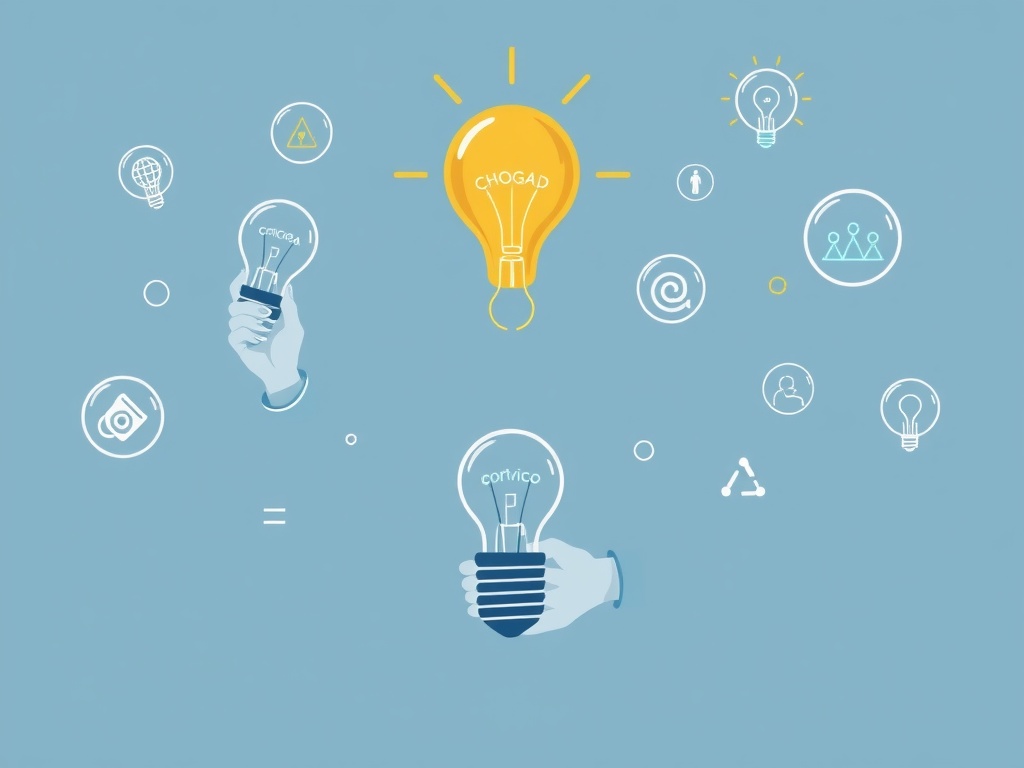The KISS principle, or Keep It Simple, Stupid, is a design principle that suggests simplicity is the best approach to finding innovative solutions. This strategy was popularized in the 1960s in the U.S. Navy.
It’s a reminder that systems are just about always better when they’re simple, when you don’t add in extra complexity. Although it’s widely applied in design, engineering and communication, the principle is useful in all industries.
When you put simplicity at the forefront, you innovate faster and overcome challenges with greater ease.
Jump To Section
Why Simplicity Matters in Design and Problem Solving

Simplicity contributes to a better user experience by eliminating confusion and frustration and making things clear. It encourages clarity.
It promotes clear communication so that they will be grasped without lengthy explanations. Reducing complexity for complexity’s sake boosts efficiency as well, creating more space for teams to focus on what matters most.
In addition, simplicity fosters creativity by limiting the scope to what is essential, leaving space for creative thinking.
Where Can We Use the KISS Principle?
The KISS principle’s versatility allows it to impact a wide range of industries, from software development to everyday life, where reducing complexity fosters efficiency and clarity.
KISS in Software Development
In the world of software development, simplicity is key. When developers adopt KISS, they write shorter, clearer code, making it easier to eliminate bugs and implement future changes. By preventing unnecessary additions that complicate systems, teams develop streamlined, user-friendly applications.
For example, consider Google’s homepage: its minimalist design prioritizes functionality without distractions. Below is a comparison of KISS with other principles:
Principle | Focus | Outcome |
|---|---|---|
KISS | Simplicity | Easy maintenance |
DRY | No redundancy | Efficient code reuse |
YAGNI | Avoid unneeded features | Streamlined development |
KISS in Product Design and Usability
Simplicity and clarity in design improve accessibility and usability. Products like IKEA furniture or Apple devices prioritize essential features, ensuring broad appeal and customer satisfaction. This minimalist approach builds tremendous loyalty, as real users appreciate products that simply get out of the way.
KISS in Business and Management Practices
By making things simpler, you increase the chances for both collaboration and productivity. Effective communication, realistic timelines, and organized processes avoid drama before it begins.
For example, when KISS is implemented in project management, it allows teams to hone in on priorities to produce solutions effectively. Tips for businesses include:
- Communicate objectives clearly.
- Eliminate redundant steps.
- Focus on high-impact tasks.
KISS in Everyday Productivity and Decision-Making
By focusing on what truly matters, we eliminate decision fatigue and open ourselves up to deeper levels of focus. For instance, prioritizing work through to-do lists or reducing distractions by cleaning up a workspace are simple KISS implementations.
Reducing decisions like meal prepping or automating expenses opens time for more gratifying activities.
How Do We Implement the KISS Principle?

Let’s look at the practical steps you can take to apply this principle to your work and processes.
1. Define Core Objectives Clearly
Begin with the clearest project objectives first. What is your need, and who are you addressing it for? Aligning broader objectives with key user needs helps keep efforts on track and keeps projects from drifting into the territory of increasing complexity.
Well-defined core objectives serve as a north star, helping to keep efforts focused and on course.
2. Focus on Essential Features or Functions
What do you truly need? Are you focusing on things that don’t matter? It’s easy to get caught up. You might find yourself spending a lot of time on tasks that seem important but don’t actually help you reach your goals.
Ask yourself questions like, “What are my top priorities?”
3. Simplify Workflows and Processes
An organized and simplified workflow not only saves time but also reduces redundancies. Automation can be a real friend in the effort to simplify day-to-day activities.
For instance, customer service teams could deploy chatbots to answer frequently asked questions, allowing human agents to focus on more complicated inquiries. Clear workflows save time and effort by eliminating confusion and back-and-forth, making cross-team collaboration easier.
4. Test for Simplicity and Usability
Conducting regular usability testing can help identify user pain points and make sure systems stay as intuitive as possible. Approaches such as A/B Testing or User Interviews indicate if designs are meeting simplicity.
A simple markdown table comparing the different testing options, such as heuristic evaluation vs. User surveys, etc. Can help clear up the confusion.
5. Iterate and Refine Based on Feedback
Simplicity isn’t set in stone. Continuous improvement is key to making sure your system adapts to what users are looking for.
Successful products, such as Gmail, have succeeded by iterating off of that feedback, continuing to refine their interfaces over time while still maintaining that simplicity.
6. Educate Teams About the Value of Simplicity
Champion the KISS mentality by training teams and encouraging candid conversations. Bring attention to examples of organizations that have thrived because they did the KISS principle, like Apple using simplicity in their product design.
Building a shared appreciation for simplicity creates the alignment and room for innovation to thrive.
Real-World Examples of the KISS Principle in Action

The KISS principle, “Keep It Simple, Stupid,” has shown its worth in every industry, creating an environment of clarity, usability, and efficiency. Here, we look at ways its implementation has influenced various companies.
Google Search Engine’s Minimalist Interface
Google Search Engine’s Minimalist Interface features a minimalist design with nothing but a search bar and Google logo. The interface removes all distractions, so even new users can instantly navigate the platform without confusion.
This speed-focused, distraction-free approach creates an experience that is all about the results, all about usability and speed. Behind the aesthetic lies a philosophy of design that values function above all.
This move didn’t just simplify the user experience; it helped reinforce Google’s chokehold on the search engine market. Its minimalist approach is a testament to the KISS principle in design.
Apple iPhone’s Intuitive Design
Apple’s iPhone is a perfect example of the KISS principle in practice. Its clean layout, single home button (now replaced by gestures), and intuitive functionality made smartphones accessible to a global audience.
Elements such as swipe-to-unlock or pinch-to-zoom demonstrate the importance of simplicity in creating usability. By giving customers what they want without drowning them in complexity, Apple created millions of loyal customers and an iconic brand.
Tesla’s Simplified Dashboard for User Experience
Dashboards with few buttons and large, easily manipulated touchscreens have become the hallmark of Tesla’s innovative brand. In demonstrating that simplicity can be as beautiful as it is safe, Tesla is combining a user-friendly experience with advanced technology.
Challenges and Limitations of the KISS Principle

Applying this principle in practice can present challenges. In this section, we’ll go over a few of those.
Balancing Simplicity with Necessary Complexity
Simplicity is key, but the goal is not to oversimplify. It is about simplifying enough to achieve clarity without sacrificing essential complexity. In software design, for instance, a simple app interface can hide the complex algorithms that are performing heavy lifting behind the scenes.
Yet complexity is not always bad when it serves a vital user purpose, think about the two-factor identification to log into your banking app. The two-factor identification certainly overcomplicates getting into your account but it is helpful for keeping bad guys out.
A markdown table can illustrate this balance:
Aspect | Simple Design | Complex Design |
|---|---|---|
Functionality | Limited, straightforward | Comprehensive, robust |
Scalability | Often rigid | Flexible, adaptable |
Usability | High | Moderate, with training |
Risks of Oversimplification in Problem Solving
Oversimplification is a common risk in any problem-solving endeavor and can produce equally incomplete solutions. Over-simplifying problems by ignoring important variables can lead to serious failures.
For example, let’s say your car won’t start. You know a car needs a healthy, charged battery to start, but jumping straight to the conclusion that you have a dead battery might be a mistake if you don’t do a little more troubleshooting.
Avoiding Misinterpretation of the Principle
Designing with the mindset that simple is always better is a misapplication of KISS, and it often results in weak, fragile designs. This is a very important distinction between “easy” and “simple”. The best solutions prioritize being easy to implement while being simple to maintain over the long term.
Alternatives and Complementary Approaches to KISS
Although the KISS principle is great for advocating simplicity, its power can be maximized with the addition of other approaches and ways of thinking. Combined, they provide a better overall approach to tackling problems and improving results with less complexity.
Minimalism vs. Simplicity in Design Philosophy
While minimalism and simplicity as a design philosophy are frequently thought of as the same, they differ in purpose. Minimalism is arguably one of the most well-known design styles around today. Simplicity, on the other hand, seeks to make things work better by removing what does not serve a purpose.
A minimalist smartphone design, for instance, features smooth edges and creates space through a lack of buttons. Simplicity ensures the interface is user-friendly. While both philosophies prioritize eliminating the unnecessary, minimalism tends to focus more on aesthetics, while simplicity focuses more on user-friendliness.
Combining KISS with Agile or Lean Methodologies
To go further, KISS fits very well with Agile or Lean methodologies, both of which emphasize incremental development and focus on the user. Agile’s iterative sprints reflect KISS’s preference for achievable objectives.
Lean’s focus on eliminating waste is a hallmark of simplicity. For example, a team that’s developing an e-commerce site might use KISS to make navigation simpler. They can use Agile to continuously iterate features and Lean to help identify and remove redundant processes.
Combined, these approaches make for a more efficient, more flexible, and more dynamic process.
Conclusion
The KISS principle is a helpful reminder that often, the simplest solution is the best one, regardless of the scenario. Focusing on clear, simple, streamlined solutions, it pushes for more efficient and effective solutions, less confusion, better communication, and better implementation.
Though not without its shortcomings, oversimplification or ignoring more complex needs, for example, KISS is still a great go-to framework. Joined with other complementary approaches, it provides a promising way to achieve a balance between broad simplicity and rich depth.
In the end, the KISS principle comes down to avoiding strict rules and instead encouraging clarity and focus. It’s more than a methodology; it’s a mindset shift, empowering individuals and teams to approach challenges with confidence and purpose.
If you enjoyed this article, don’t forget to share and subscribe below.


